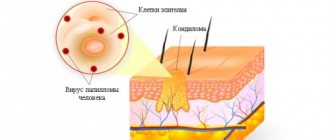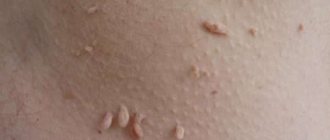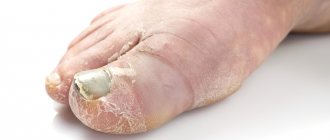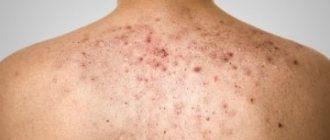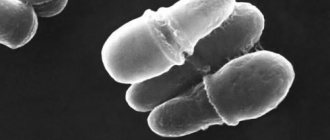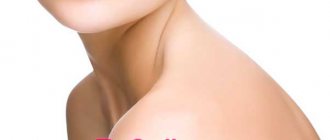Sometimes on the upper eyelid, especially in the corner of the eye, unpleasant plate-shaped formations of light yellow color appear - this is xanthelasma of the eyelids, a type of xanthoma. They are painless, soft to the touch, have a benign nature and are not prone to becoming a malignant tumor. As a rule, they appear in older people, more often in women. Although these formations do not pose a threat, they cannot be ignored, since their appearance may indicate serious disorders in the body. If you find such plaques in yourself, you should visit a doctor and get examined.
Xanthelasma: causes
Xanthelasma
From a medical point of view, xanthelasma of the eyelids is a benign formation of a flat (less often convex) shape, having a smooth or wrinkled surface and a characteristic whitish-yellow and sometimes light orange tint. The diameter can be from 2 mm to 5 cm. As a rule, xanthelasma does not bother a person in any way, is painless, and is only a cosmetic drawback. If the size of the plaque is small, it does not interfere with the proper functioning of the eyelid.
The exact reasons why this neoplasm appears have not been established. However, in the course of a considerable number of clinical studies, a clear relationship between the defect and such factors of the condition of the adult’s body was revealed, such as:
- excess body weight;
- diabetes mellitus (lack of the hormone insulin, which causes a persistent increase in glucose levels in the blood);
- myxedema (a disease considered an extreme form of hypothyroidism in adults - a long-term and persistent lack of thyroid hormones);
- pancreatitis (inflammation of the pancreas), liver damage;
- lipoid nephrosis (dystrophic kidney damage);
- high concentration of cholesterol in the blood.
As for children, xanthelasma in them is a hereditary pathology such as xanthomatosis. Subsequently, disturbances occur in the functioning of the liver and the functioning of the cardiovascular system. Often this is also accompanied by the formation of cysts on the hands.
Xanthomatosis is the formation of numerous xanthomas on the surface of the skin.
Symptoms and causes
Xanthelasma at the initial stage can go unnoticed for a long time. People perceive small yellow spots on the eyelids as natural age-related skin pigmentation. Usually women disguise them with powder and eye shadow. If the plaques are large, many people mistake them for wen and try to remove them using various folk remedies.
Xanthelasma can be recognized by the following characteristic signs:
- formations from light yellow to light orange on the outer surface of the upper or lower eyelid;
- the size of the spots varies from 0.5 to 1.5 cm;
- may be single, or may merge and move to the bridge of the nose;
- the plaques do not itch, do not hurt, and do not cause any discomfort other than moral discomfort.
Xanthomas and xanthelasmas - what is the difference?
Histologically these are similar formations. The main difference between the two is that xanthelasma is rarely associated with elevated triglyceride (lipid) levels. Only in some cases does this defect manifest itself due to a violation of fat metabolism in the body. But xanthomas, in turn, are formed due to lipid metabolism disorders.
With xanthelasma, as a rule, the level of lipids in the blood is normal, and subsequently there is a slight increase in cholesterol concentration. Despite this, it is often called flat xanthoma.
The difference can also be identified in relation to the places where neoplasms appear. If xanthelasmas are mainly plaques around the eyelids, having mainly a cosmetic defect, then xanthomas come in different types. For example, its appearance, such as tuberose, appears most often on the skin in the area of the knees and elbows. “Representatives” of another type – tendinous – “settle” on the extensor tendons of the feet and hands, as well as on the Achilles tendon. There are also: eruptive xanthomas are cluster-shaped formations of plaques that can appear on any part of the body; flat xanthomas.
What to do if xanthelasma appears?
If a neoplasm appears in the eyelid area, with a description similar to xanthelasma, consult a dermatologist. As a rule, making a diagnosis does not cause difficulties and is carried out during a visual examination. However, one should take into account the fact that a neoplasm that appears on the skin is an external sign of a malfunction of the internal organs. Therefore, in this situation, a dermatologist may recommend additional consultation with a therapist, endocrinologist, cardiologist, nutritionist and undergo a comprehensive examination.
A set of diagnostic tests may include:
- diascopy (pressure on the affected area of the skin to determine the nature of the tumor);
- subcutaneous node biopsy;
- blood test for lipid profile;
- calculation of body mass index;
- ECG;
- EchoCG;
- MSCT of the coronary arteries;
- Ultrasound of the liver, thyroid gland, etc.
Who's at risk
Most often, xanthelasma forms in women over 45 years of age.
Most often, xanthelasma forms in middle-aged and elderly people. As a rule, the “victims” are women who have crossed the age mark of 45 years and suffer from diabetes mellitus and hypercholesterolemia (abnormally high levels of lipids in the blood).
However, plaques around the eyelids can also form in men.
The disease is sudden in nature and is not preceded by any other pathologies on the skin of the eyelids. If xanthelasma has formed, then it persists forever, and also tends to increase in size and lesions over time.
What clinical manifestations are xanthelasma characterized by?
Xanthelasmas of the eyelids appear suddenly, grow and develop slowly but steadily. They have a soft consistency and are painless when pressed. In some cases, the neoplasms reach the size of a large bean, merge together, forming a characteristic lumpiness, or transform into a solid yellow stripe running across the entire eyelid.
Xanthelasma does not impair vision, is not prone to malignancy (malignancy) and does not pose a threat to human life. Once a cholesterol plaque appears, it remains on the skin throughout life. Therefore, most often it is perceived primarily as an aesthetic defect.
Treatment of xanthelasma of the eyelids
Specific treatment for xanthelasma has not yet been developed. During the examination, when it is detected, the doctor takes the appearance of the neoplasm as the basis for prescribing measures to eliminate this defect.
Laser removal of xanthelasma
To eliminate a cosmetic defect, one of the currently available methods may be indicated:
- surgical excision;
- electrocoagulation (current exposure);
- laser removal of xanthelasma;
- cryodestruction, or removal of xanthelasma with liquid nitrogen;
- radio wave destruction (destruction using radio waves).
If, in addition to a cosmetic defect, there is a pathology that is the cause of a lipid metabolism disorder, therapy is prescribed to treat this primary disease. As a rule, these are insulin injections or taking thyroidin powders (tablets).
If pronounced disturbances in blood composition and high cholesterol levels are detected, special nutrition is prescribed, aimed primarily at limiting the consumption of animal fats. In addition, medications are prescribed to lower cholesterol levels: ascorbic and nicotinic acids, choline chloride (vitamin B4), pyridoxine (one of the forms of vitamin B6), etc.
Important! Since the named cholesterol-lowering drugs have a choleretic effect, they should not be taken if there is a violation of the removal of bile from the body.
Due to the fact that our portal has separate detailed articles on the removal of neoplasms (moles, papillomas, warts) with laser and liquid nitrogen, in this article we will focus on methods such as excision with a scalpel, electrocoagulation and radio wave destruction.
Xanthelasma of the eyelids: surgical removal
To eliminate discomfort and pain during the procedure, local anesthesia is used.
This method is used in the case of large xanthelasmas (from 1 cm). Small formations are rarely removed in this way, mainly in cases where for some reason it is not possible to use laser radiation or electrocoagulation.
The surface of the neoplasm and the area around it are thoroughly treated with an antiseptic, after which the xanthelasma is separated using tweezers and scissors. If there is enough skin, the edges of the wound are brought together with tweezers and lubricated with iron sesquichloride. Thanks to iron albuminate, a strong crust is formed, the wound heals by primary intention, usually within a week.
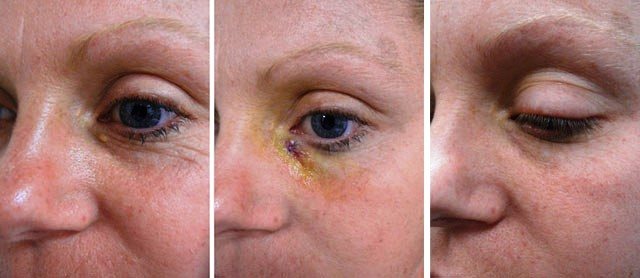
If after removal wide wound edges are formed, they are cauterized with electric current.
The manipulation is completed by treating the wound with a solution of potassium permanganate or brilliant green. Sutures are applied only after removal of very large plaques, which are combined with excess skin folds on the eyelids.
For the surgical method, complications are possible in the form of bleeding from the postoperative wound, and after healing, rough scars can form.
What do we offer
Our medical center performs laser removal of xanthoma of any location.
Most often we have to deal with xanthomas of the eyelid.
The essence of laser removal is the evaporation of skin cells containing fat deposits.
Laser removal of xanthoma is carried out on the day of treatment, under local anesthesia. Removal is completely painless and bloodless.
For limited areas of fat deposits in the skin, the cost of removal is calculated as for skin formations of the eyelids of any origin. If the formations are large (several square centimeters in area), extended (more than 1 cm in length) and deep (affect all layers of skin and tissue up to the orbital muscle), the cost of removal will be 12,000 rubles per formation.
You can find out the cost of removal depending on the size in our price list.
The results of laser removal depend on the depth and extent of the lesion. With superficial fat deposits, no traces remain after removal.
Removal by electrocoagulation
Preparation for removal is the same as in the case of a scalpel - first local anesthesia, then antiseptic treatment.
The direct effect on xanthelasma is achieved through an electrocoagulator with a fine tip. This electrode cuts off the upper layers of the plaque. After this, the doctor performs further sequential coagulation of the entire xanthelasma down to its base. During the procedure, simultaneous cauterization of the lumens of those blood vessels that are in the affected area occurs.
This method is characterized by the absence of bleeding. The crust that forms at the site of the former plaque requires careful handling. The doctor must explain to the person how to properly care for this crust until it goes away on its own.
You cannot tear off the crust, it must fall off on its own!
After the crust comes off, you will see a pale pink mark in its place. But after a few months, the skin color will even out.
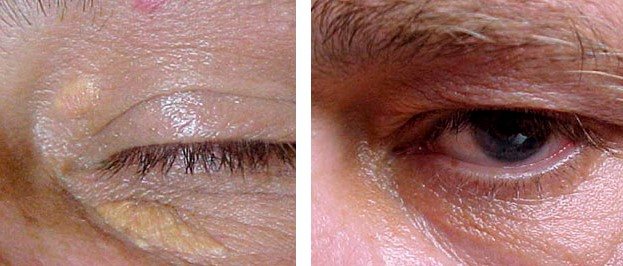
Symptoms
Xanthelasma of the eyelid is soft to the touch. Its color varies from straw to orange. Often, formations are observed in women in middle or old age. They appear suddenly without any additional symptoms and remain unchanged for a long time.
Their size can vary from the size of a small pea to a large bean. With multiple formations, they often merge, creating an uneven, bumpy ribbon.
Xanthelasma never degenerates into a cancerous tumor and does not entail complications for human health. It also does not cause pain or various types of discomfort. The only negative point is considered a cosmetic problem.
On this topic
- Other
All about hemangioma on the skin in adults
- Irina Nasredinovna Nachoeva
- September 3, 2020
With xanthomatosis, plaques appear on the lower eyelid, other parts of the face, neck, lips and oral mucosa. Typically the size of such formations is 2–5 mm.
Xanthomas do not disappear on their own and persist throughout life. They slowly grow in volume, and their number also increases.
Possible complications after removal
Complications are quite rare. It can be:
- relapse of the disease. If high blood cholesterol levels are not changed and lipid metabolism is not normalized, xanthelasma may return. It is in order to prevent this that the patient is recommended to switch to a diet that is suitable in this case (vegetable protein);
- bleeding from the wound (after excision of the plaque with tweezers and scissors);
- formation of a scar (hypertrophic or keloid) at the suture site after surgical removal of the tumor.
Read about the types of scars, the stages of their formation, and correction methods: Removal of scars on the face
Treatment at home
Medicines
Xanthelasma is often removed with a laser, but medications are often used. If the problem arose due to an increase in the amount of cholesterol in the blood, therapy involves normalizing fat metabolism. First of all, treatment is aimed at eliminating the concomitant disease, which is responsible for the appearance of growths on the eyelids. Patients are then prescribed topical medications that target localized fat accumulation. Zinc-ichthyol or hydrocortisone ointment is prescribed. Medicines will need to be applied to the affected areas of the skin and rubbed in with massage movements. You need to use the ointment 2-3 times a day. You can remove xanthelasma at home using this method in 3 weeks.
During therapy, it is important to avoid contact of the product with the mucous membranes of the visual organs.
Treatment with folk remedies
Compresses
Therapy with unconventional methods can be carried out only after consultation with a doctor. You can get rid of xanthelasma with the following folk remedies:
- Honey. You will need to prepare an egg, 1 tablespoon of flour and 1 teaspoon of honey. Prepare the dough from the ingredients and make a small cake out of it. Apply to the affected eyelid and wait 10 minutes. After removing the compress, the visual organs will need to be washed with running water without using soap. Use the product 2 times a day until the xanthoma is completely removed.
- Onion. You need to peel the onion and place it in the oven until it becomes soft. Grind the vegetable using a blender and grate 5 grams of laundry soap, mix the ingredients. Wrap with gauze and apply to the eyelid, avoiding contact with the mucous membrane. Leave for 10 minutes, then rinse with water. Apply a compress twice a day.
- Chestnut. The fruits in the amount of 5 pieces need to be baked in the oven and then chopped. Mix with 1 tablespoon of honey and half a small aloe leaf, which has also been previously crushed. Apply the resulting mixture to the affected area of the eyelids and wait 15 minutes. Rinse off with running water at room temperature.
Return to contents
Effective decoctions
Diet food
With the help of diet it is possible to normalize lipid metabolism. Doctors from Dr. Shilova’s clinic note that it is important for patients to limit animal fats in their diet, replacing them with vegetable ones. You need to stop eating fatty meats. Vegetable, olive and flaxseed oil will also be beneficial. White rice, semolina, sweets and pasta should also be excluded from the menu.
The diet should contain a sufficient amount of vegetables and fruits. Doctors recommend consuming them fresh. This food contains the required microelements and vitamins that improve fat metabolism and the general condition of the body. In addition, you can get useful substances from vitamin-mineral complexes, which are sold in pharmacy chains. It is permissible to take them after consultation with a specialist. The menu should also contain fiber, which is found in cereals and legumes. It is important for the patient to stop drinking alcohol and smoking.
Source: etoholesterin.ru
How to prevent the formation of xanthelasma
The measures listed below will help avoid the occurrence of xanthelasma, as well as improve the condition of patients with diseases of the liver, pancreas, and lipid metabolism disorders.
So, for this purpose, it is recommended to switch to a balanced diet, eliminating all animal fats from your diet and replacing them with vegetable fats, and giving up high-calorie foods. You can eat only those foods that are allowed for people with liver and pancreas diseases.
Lipotropic drugs may be prescribed as prescribed by a doctor based on a complete clinical examination. The mode of their administration is also determined by the doctor.
Important! If you or your loved ones develop xanthelasma-like plaques, you should consult a doctor. Only a specialist can determine whether this is truly harmless xanthelasma. The average person confuses it with pseudoxanthoma, tumor of the sweat glands (syringoma), and skin tumors.
Diagnostics
Patients with xanthelasma of the eyelids need to consult not only an ophthalmologist, but also an endocrinologist and a dermatologist. The examination must include a general blood test, a study of lipid metabolism (level of lipoproteins and cholesterol in the blood serum).
The characteristic appearance of the formations usually does not pose any difficulties in making a diagnosis. In addition to xanthelasmas and xanthomas, the patient is often diagnosed with obesity, hypertension, metabolic syndrome or diabetes mellitus. Xanthelasma of the eyelids must be differentiated from other similar skin diseases (syringoma, pseudoxanthoma), incl. malignant tumors.
How to reduce the risk of relapse of the disease
If the patient has already encountered this problem, he still has disturbances in fat metabolism and he does not want xanthelasma to occur again, he can be recommended the following:
- follow a dairy-vegetable diet. From your diet you need to remove fatty meats as much as possible, as well as high-calorie foods. The permissible amount of butter per day is no more than 25 g, vegetable oil is no more than 75 g;
- avoid injury to the skin. In case of damage, spontaneous formation of plaque clusters (multiple xanthoma) is possible.
Dietary recommendations
is to some extent , you should reconsider your diet.
- It is important to limit the amount of animal fats. We are talking about offal and fatty meats. It is better to use vegetable oil instead of butter.
- You should add at least 300 g of vegetables, except potatoes, and 200 g of fruit to your daily diet.
- You should consume fiber and avoid flour products made from premium flour. It is important to add bran bread, brown rice, oats, buckwheat, lentils and beans to your diet.
- Be aware of omega-3 fatty acids, which are found in flaxseeds, fish and nuts.
about 1.5 liters of water per day and giving up bad habits, including alcohol and smoking.
